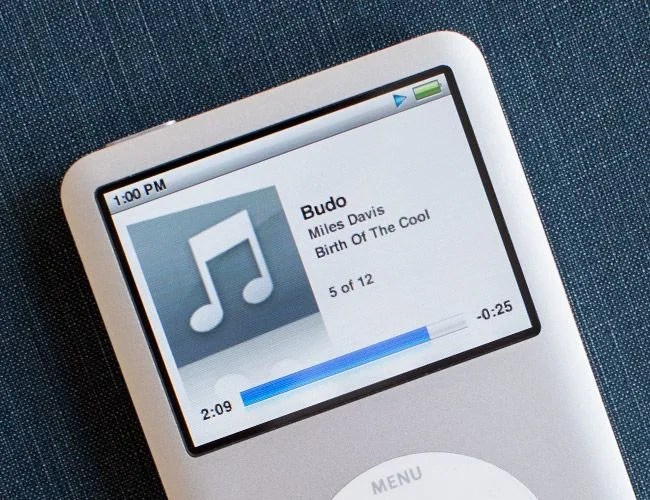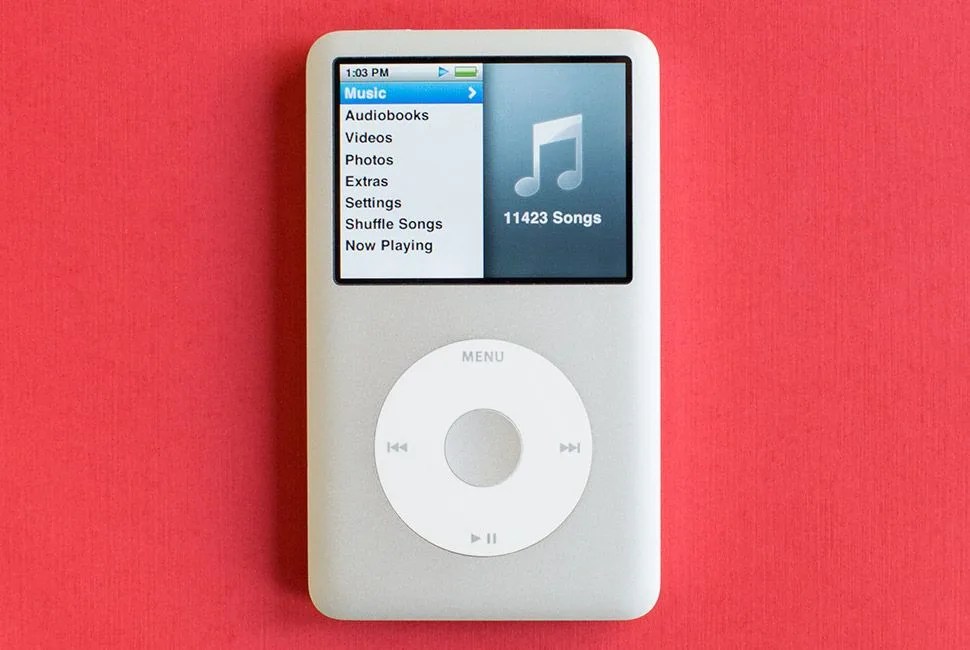After news spread that Apple had pulled the plug on the iPod Classic in September of 2014, they started disappearing from the shelves. eBay and Craigslist prices skyrocketed. When I went online expecting to buy a used iPod Classic for $80, I saw used options for over the retail price, and unboxed iPods going for well over $500 with dozens of bidders. Two months had passed since the product was discontinued. I was in luck, though. My central Connecticut university had a small Apple retail counter nestled into the student center’s technology store. My school is rural enough not to have been flooded with those in the know, but even still, when I arrived, there was only a single, gleaming box left on the shelf. I picked it up and checked the price, half expecting to see it doubled. $249.99. I carried it to the counter and swiped my student ID card to make the transaction, using the entirety of my remaining textbook and laundry fund to do so. Walking home, I felt like I was carrying rare diamond. Finally, I ripped off the plastic, plugged in the 30-pin cable, and waited for my 11,000 songs to trickle from my computer to the device.
My brother first got an iPod as a Christmas present from our parents in 2004. It was the third generation of the product, coming alongside the first mini, a hideous black-and-red U2 edition — and it was a revelation. 20GB of music in the palm of your hand. This generation’s design, with the buttons incorporated into the click wheel itself, lasted 10 years. It cost $299 and weighed in at 5.6 ounces. It was over half an inch thick, the grayscale screen was 2 inches, diagonally, and it had a resolution of 160 x 12. The battery life was a booming “about 4 hours”. Though dimensions shrank over time while screen size increased along with the resolution, color, hard drive size, the iPod stayed generally the same. It felt about the same in your hand while other iPod models came and went. In the fall of 2004 Apple added a color screen for photos. Next came video and a slimmer, flatter design. The final update came in 2007, when the iPod was already so out of date, they introduced the suffix “Classic”. This was the model I had bought for under $100 on Craigslist and eBay more than a couple times as my iPods, including the hand-me-down from my brother, bit the dust. And it’s the model that Apple finally killed in 2014.
Newly inaugurated Apple CEO Tim Cook said in 2014 that they had chosen to shut down manufacturing because it had simply become too hard to source the materials needed to make the Classic. That answer left Classic lovers — and I count myself among them — disappointed and skeptical. It seemed hard to believe that a company as powerful and wealthy as Apple could meet such a trivial roadblock in production. It also seemed unlikely that there weren’t enough Classic lovers in the market to warrant a redesign. A popular theory for an off-the-record motive is that the Classic, without Internet capabilities, didn’t fit into their move towards cloud synchronization and their new streaming service, Apple Music.

That left me, the millennial luddite that I am, frustrated. I’ve never used Spotify and I am just as wary of Apple Music. “Owning” my music has always been an important part of my music experience. I like consciously expanding my library, deciding what is and isn’t worthy of my download. I don’t want to worry about monthly payments, advertisements, buffering — or worse — a lack of Internet putting my music out of reach. Sure, I could get the iPod Touch, which has 128GB of storage, enough to hold my library, but it’s tainted by its own capabilities: wi-fi connectivity, touch screen, the App Store and a couple cameras. If the iPod Classic was a paper book, the Touch is a Kindle. The simplicity of the Classic means I can get through entire albums, even entire collections, before I change directions. I don’t have social media or email pulling my attention away. Music takes the forefront, and that’s all I want in a music player.
Of course, the reality is, claims that the iPod is outdated aren’t off base. It does seem to frequently forget album art. The games have been updated from minimalist to ’90s tacky. Movies downloaded from the iTunes store are too high res to load onto the iPod at all, even the non-HD versions. It isn’t cutting edge and hasn’t been since its inception. And then there’s the feeling of impending doom when you have your 11,000-song iTunes library on a spinning disc in your pocket. When my iPod fails to respond and I do the hard reset — flicking the hold switch before holding menu and select until the silver apple appears — I worry that instead of booting up, the pixelized skull and crossbones will once again appear on the screen, informing me that I’ve lost my hard drive forever.
Now that it is considered “vintage” Apple gear, I guess I could just put it back in the box and seal it in plastic wrap. A relic, a reminder of simpler times and eventually a nice return on my investment. But instead, I use it every day, shoving it into my backpack and letting the shiny silver back scuff and scratch. I don’t own it as a museum piece; I own it as a tool. It’s a type of stodgy conservatism, I suppose, hanging on to a traditional way of doing something even as everyone else adopts the newer and ostensibly better way of listening to music. I can only hope that when I get that final skull and crossbones, Apple will have had a change of heart and release a vintage-inspired iPod Classic, redeeming me and my luddite tendencies.
